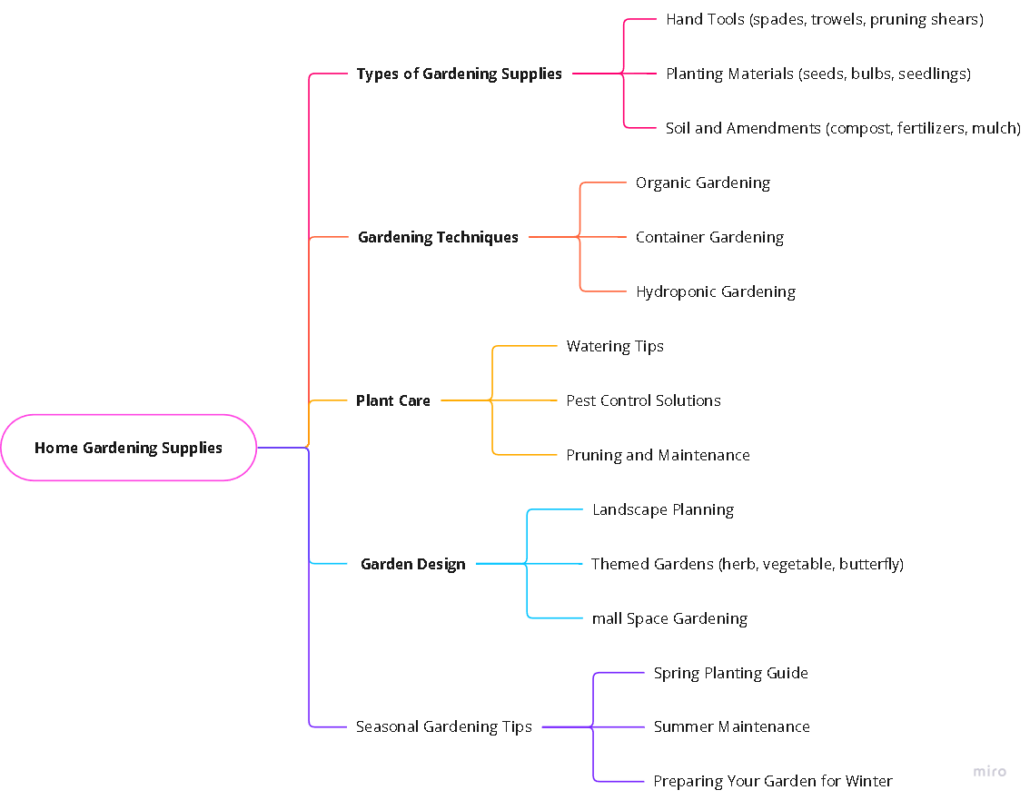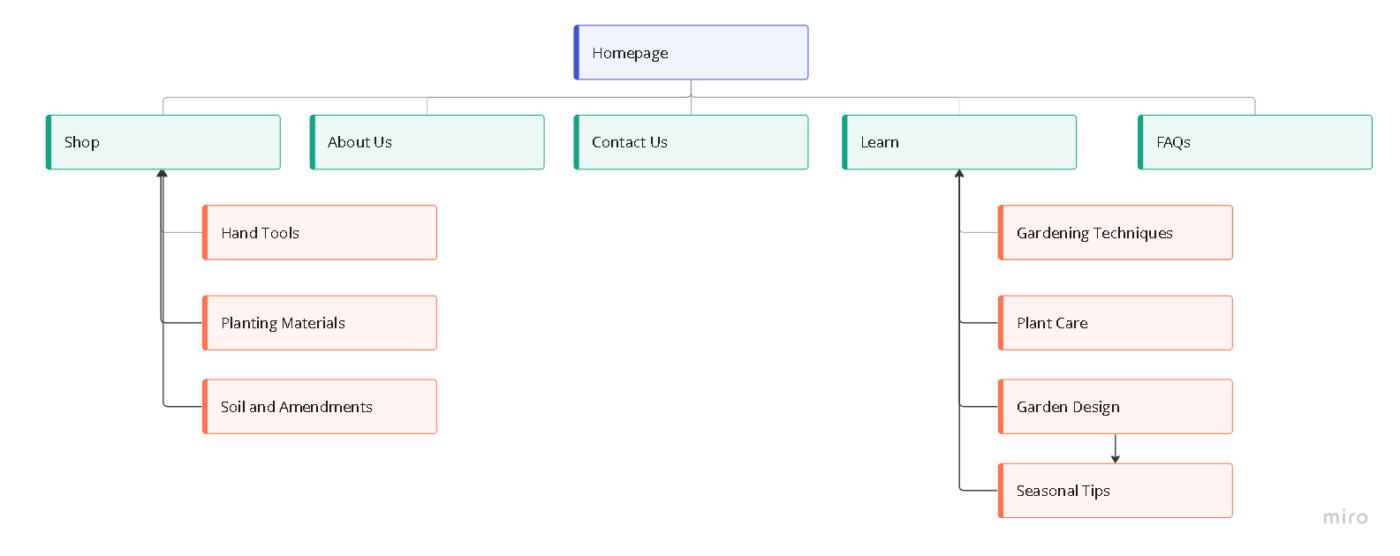
Have you ever clicked around a website, and everything just clicked? That’s thanks to something called Topical Map SEO. Wondering what that is? If your website feels like a bit of a puzzle or you’re looking to get noticed more by search engines, stick around.
We’re diving into how to make your site super user-friendly and search engine-ready. Imagine your website so smoothly that visitors and search engines can’t get enough. Let’s get into making that happen, shall we?
What is Topical Map SEO?
Topical Map SEO is a strategy that organizes a website’s content into clearly defined topics or themes, making it easier for search engines to understand and categorize the information. This approach helps improve a site’s SEO performance by highlighting its relevance and authority in specific subject areas and enhances the user experience by making content more accessible and navigable.
Why It’s a Game-Changer
- Enhances User Navigation: Visitors can effortlessly find the information they’re looking for, leading to a better overall experience on your site.
- Boosts SEO Rankings: Clear thematic organization helps search engines understand your content better, potentially leading to higher rankings.
- Streamlines Content Management: As your website grows, a topical map keeps your content organized and interconnected, making it easier to manage and expand.
Topical Map SEO allows you to set up your website for clearer navigation, improved search engine recognition, and a more organized content strategy.
Benefits of Planning a Topic Map
| Criteria | Before | After |
| User Navigation | Users often experience confusion and frustration due to a lack of clear pathways, leading to higher bounce rates. | Navigation becomes intuitive, with users effortlessly finding the information they need, improving overall site engagement. |
| SEO Rankings | Content is scattered, making it hard for search engines to understand the site’s focus, resulting in lower rankings. | Clear thematic organization boosts search engine comprehension, potentially leading to higher rankings in search results. |
| Content Management | Growing content leads to disorganization, making managing and updating existing information challenging. | A structured topical map ensures content remains organized, interconnected, and easier to manage, even as the site expands. |
| Content Clarity and Relevance | Overlapping or unrelated content topics can confuse users and search engines, diluting the site’s thematic focus. | Each content has a clear place within a topic cluster, enhancing the site’s authority and relevance in specific subject areas. |
| Future-Proofing | Adding new topics or content disrupts the site structure, complicating navigation and SEO efforts. | The scalable nature of a topical map allows for easy incorporation of new trends and topics without disrupting user experience or SEO. |
Creating a topic map before a website design or a revamp is like drawing a map before a road trip. It sets you up for a smoother journey and ensures you hit all the key spots without getting lost. Here’s how a topic map brings value:
User-Friendly Design
Creating a topic map sets the stage for a website that’s a breeze to navigate. Imagine every visitor finding exactly what they need in just a few clicks. This isn’t just about making your site look good; it’s about crafting an experience where users feel guided and understood, turning casual browsers into loyal visitors.
SEO Edge
In the world of SEO, structure is king. By mapping out your topics, you give search engines a blueprint of your site’s content. This clarity allows search engines to index your site more effectively, understanding the hierarchy and relevance of your content, which can lead to better rankings and more visibility.
Content Clarity
A topic map acts like a content organizer, ensuring every article, video, or infographic has a clear home. This organized approach prevents your site from becoming a digital attic full of forgotten or hard-to-find information. Instead, your content becomes part of a larger, interconnected ecosystem, making your site a comprehensive resource on your chosen topics.
Future-Proofing
A solid topic map ensures you can scale gracefully as your website grows. It’s like having an expandable house where adding a room doesn’t throw the whole layout into chaos. You can introduce new topics, trends, and ideas without disrupting the user experience, keeping your site fresh, relevant, and organized.
Planning a topic map is like setting the foundation for a building. It ensures your website is structured, intuitive, and poised for growth, giving users and search engines a clear path through your content. Ready to build a website that stands out for its clarity and ease of use? Let’s dive into how you can create your own topic map.
The Role of Website Architecture in SEO
Website architecture isn’t just about where your pages sit; it’s about building a solid foundation for user experience and SEO. A well-thought-out website structure wonders for your site’s visibility in search engines. It’s akin to laying out a city map where every street leads somewhere important, and no destination is too hard to find.
A Clear Path for Search Engines
Search engines are like tourists in the city of your website. Your city’s signage is a clear, logical structure, effortlessly guiding them through the most important landmarks (your content). This clarity helps search engines index your pages more efficiently, ensuring they understand the hierarchy and relevance of your content, which is crucial for ranking well.
Enhancing User Experience
For visitors, a well-structured website feels intuitive. They can navigate from point A to point B without getting lost, making their journey through your site smooth and enjoyable. This positive experience keeps users returning and reduces bounce rates, a factor search engines consider when ranking sites.
The Power of Semantic Relevance
In the age of semantic search, where search engines strive to understand user intent and the contextual meaning of terms, the structure of your website plays a pivotal role. By organizing content that mirrors natural language and logical relationships, you’re speaking the same language as search engines, boosting your chances of ranking for relevant queries.
Keyword Clustering for Focus
You don’t want to pick out single keywords when researching. You’ll want to use keyword clustering when planning your topical map, where groups of related keywords are used to establish the theme and relevance of your content. This approach aligns with modern search algorithms that favor topic authority over keyword density, making your website a go-to resource for specific subjects.
By prioritizing a solid website architecture, you’re not just building a site that’s easy to navigate; you’re constructing a beacon for search engines and a haven for users. It’s about creating a space where both can find exactly what they need, enhancing your site’s value and visibility in the digital landscape.
Building a Topical Map for Your Website

Building a Topical Map for your website involves a structured approach that starts with in-depth keyword research, focusing on identifying core topics and their related subtopics. This process is crucial for aligning your content with Google’s understanding of topics, which is increasingly based on entities and their interrelations within the Knowledge Graph.
- Keyword Research and Entity Identification: The first step is to select a niche-specific SEED keyword that encapsulates the essence of your content. SEO tools like SEMrush or Ahrefs can help uncover related keywords, synonyms, and long-tail variations. Identifying entities related to your topics, from places and people to brands and concepts, is essential to ensuring your content aligns with search engines’ semantic understanding.
- Keyword Clustering: After gathering a comprehensive list of keywords, the next step is to organize these into clusters based on semantic relevance. This process involves grouping keywords and entities to form coherent topic clusters, ensuring a logical content flow and enhancing content relevance. Tools like Semrush’s Keyword Manager can semi-automate this process, though a manual review is recommended to ensure contextual accuracy.
- Topic Visualization: With your keyword clusters, you’ll identify main topic themes and transition these groups into an interconnected topic-themed model. This helps understand the topic/subtopic hierarchy, crucial for planning semantically relevant content. Mind-mapping tools can be particularly useful here, allowing you to visualize the primary themes and how detailed subtopics branch out.
- Planning a Topic Cluster Content Strategy: Transitioning to a topic-clustering approach ensures your content is organized and interconnected, providing comprehensive coverage of each topic. This involves planning pillar content that is the foundation of each topic cluster, linking to more specific cluster content pieces within the associated subtopics.
- Competitor Analysis: Understanding your competition can provide insights into topics they’ve covered, helping ensure your topical map is comprehensive. Analyzing competitors’ content and structure can reveal additional keywords or phrases driving traffic to their sites, which you can incorporate into your topical map to enhance effectiveness.
Implementing a Topical Map in your website’s architecture involves integrating these maps into the site structure, using pillar pages, hub and spoke models, content hubs, and best internal linking practices to enhance topical authority. This structured approach improves SEO and enhances user navigation and content clarity, ensuring your website remains organized and scalable as it grows.
Implementing Topical Map SEO in Website Architecture

Integrating a Topical Map into your website architecture involves organizing content to reflect the hierarchy and interconnectedness of topics related to your niche. This strategic organization enhances SEO and user experience by ensuring content is easily navigable and search engines can understand the site’s structure and relevance. Here’s an outline of a typical website architecture that addresses the topical map:
Website Architecture Outline
Homepage:
- Serves as the gateway to your site, summarizing what users can expect to find.
- Links to major pillar pages or content hubs showcasing your site’s core topics.
Pillar Pages:
- Comprehensive pages that provide an overview of a broad topic.
- Serve as the cornerstone for more detailed content, linking to specific articles or blog posts (spokes) that delve into subtopics.
- Function as a hub within the hub and spoke model, centralizing information on a particular theme.
Content Hubs:
- Like pillar pages, it can be more extensive, potentially encompassing various content formats (articles, videos, infographics) around a theme.
- Designed to be a resource center for a particular topic, providing depth and breadth of information.
Blog Posts and Articles:
- Address questions, problems, or aspects of the broader topics covered in pillar pages or content hubs.
- Internally linked to and from pillar pages/content hubs to reinforce the site’s topical map structure.
FAQs and Resource Pages:
- Support the main content by answering common questions and providing additional resources, further establishing topical authority.
- It can be linked to multiple related content pieces to serve as a central knowledge repository on specific queries.
Contact and About Pages:
- While not directly tied to the topical map, these pages are essential for user trust and engagement, providing background about the site and easy ways to get in touch.
Category Pages (for eCommerce or Services):
- Organize products or services into categories that reflect the topical map, making it easier for users to find what they need based on their interests or problems.
Internal Linking Strategy
- From High to Low: Link from high-authority pages (like the homepage or pillar pages) to more specific blog posts or articles to distribute link equity and improve the visibility of deeper content.
- Between Related Content: Ensure that related articles, blog posts, and resource pages are interlinked to guide users through your content, enhancing their engagement and the site’s topical relevance.
Enhancing Topical Authority
- Comprehensive Coverage: Aim to cover every aspect of your topics, from broad overviews on pillar pages to detailed explorations in blog posts.
- Regular Updates: Keep your content fresh and up-to-date to maintain topical authority and relevance in your niche.
By following this outline, you can structure your website in a way that makes sense to users and search engines, leveraging your topical map for maximum SEO benefit and user engagement.
Addressing User Intent with Topical Maps
When leveraging topical maps for SEO, it’s vital to align your website’s content with the four main types of user intent: informational, navigational, transactional, and commercial investigation. Understanding these intents helps create content that meets the user’s specific needs at different stages of their search journey.
Informational Intent
Users with informational intent are looking for knowledge or answers. They might ask questions like “How to tie a tie?” or “What is Topical Map SEO?” Content that best addresses informational intent includes:
- Blog Posts: Detailed articles exploring topics, answering questions, or providing how-to guides.
- FAQ Pages: Sections addressing common questions about your industry or services.
Navigational Intent
Navigational intent users know where they want to go; they use search engines as a shortcut. They might search for “Facebook login” or “SEOTopicalMaps contact.” To cater to this intent, ensure you have:
- Clear Branding on All Pages: Make it easy for users to recognize they’re in the right place.
- Easy-to-Navigate Site Structure: Including a robust menu system and sitemap to guide users directly to their intended destination.
Transactional Intent
These users are ready to buy or perform a specific action, searching for terms like “buy running shoes online” or “book a flight to New York.” Pages that satisfy transactional intent include:
- Product Pages: With detailed descriptions, images, and purchase options.
- Service Pages: Offering clear information on services provided, benefits, and how to engage.
Commercial Intent
Users with this intent are considering a purchase and are comparing options, like “best SEO tools” or “Mailchimp vs. Constant Contact.” To address this intent, consider:
- Comparison Pages: These objectively compare your products or services with others in the market.
- Review Pages: User-generated reviews or expert opinions on your offerings can sway potential customers.
By aligning the types of pages on your website with the user intent they’re most likely to satisfy, you can ensure your topical map boosts your SEO and significantly enhances user experience, guiding them smoothly from query to content.
Monitoring and Measuring the Impact of Topical Map SEO
Leveraging tools like Google Search Console, Google Analytics, and SEMrush is essential to measure your Topical Map SEO strategy’s impact effectively. These platforms provide comprehensive insights into how well your content aligns with user intent and performs in search results.
Google Search Console
Google Search Console offers a direct look at how your site performs in Google search. Key metrics to monitor include:
- Search Queries and Rankings: Understand which queries bring users to your site and how specific pages rank for those queries.
- Click-Through Rate (CTR): Analyze the CTR for various queries to gauge the effectiveness of your title tags and meta descriptions.
- Indexed Pages: Ensure all your important content is indexed and identify potential issues with unindexed pages.
Google Analytics
In Google Analytics 4, understanding user behavior on your site is more intuitive, with metrics focused on engagement and user experience.
- Engagement Rate: Look at the engagement rate to see how often users interact with your content. A higher engagement rate suggests your content is compelling and resonates well with your audience.
- Traffic Sources: The Traffic Acquisition report in GA4 shows where your users come from, helping you identify if organic search traffic to your topical map content is increasing, which indicates SEO success.
- Conversions: GA4 allows you to track specific user actions, such as newsletter sign-ups or purchases, showing how effectively your content leads to conversions.
SEMrush (or Similar Tools)
SEMrush and similar platforms offer advanced SEO analytics and can help you in:
- Keyword Performance: Track how well your pages rank for target keywords in your topical map.
- Competitor Analysis: Compare your content’s performance against competitors to find areas for improvement.
- Backlink Analysis: Monitor the growth in backlinks to your site, which can indicate increasing authority in your niche.
By regularly reviewing these metrics, you can adjust your Topical Map SEO strategy to meet user needs better and improve your site’s overall SEO performance. Monitoring the micro (page-level performance) and macro (site-wide trends) aspects is essential to ensure a comprehensive understanding of your strategy’s effectiveness.
Conclusion
Embracing Topical Map SEO is a transformative strategy for structuring your website, ensuring that it’s user-friendly and finely tuned for search engine optimization. This approach to organizing content around central themes and topics has enhanced website architecture significantly, making navigation intuitive and content discovery a breeze for users. Moreover, it aligns with search engines’ evolving algorithms, favoring well-organized, contextually relevant content, boosting your site’s visibility and authority in your niche.
By adopting a topical approach, you’re essentially laying down a clear, interconnected content roadmap that guides users and search engines through your site’s offerings. This improves user engagement and retention and positions your site as a credible, authoritative source of information, enhancing your SEO efforts.
Are you navigating the challenges of implementing Topical Map SEO or curious about how it can enhance your website’s architecture and SEO? We’re here to help. Reach out for expert consultation and discover tailored strategies to leverage Topical Map SEO for a more organized, user-friendly, and search-optimized website.

